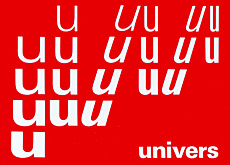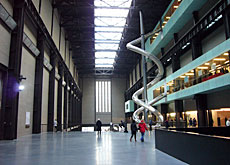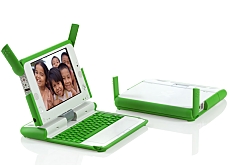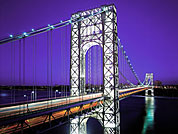Lausanne showcases best of Swiss design

Whether it's the watch on your wrist, the sports shoes on your feet or the typeface on your computer – there's no escaping Swiss design.
Lausanne’s Mudac design museum is currently playing host to the “Criss+Cross: design from Switzerland” travelling exhibition, which highlights the inventiveness and diversity of Swiss design over the past 150 years.
The Criss+Cross exhibition, created by the Swiss Arts Council, Pro Helvetia, contains over 400 different objects – design classics and lesser-known items – displayed in six huge wooden packing crates.
“Lots of people know the objects but don’t necessarily associate them with Switzerland,” Claire Favre-Maxwell, curator at Mudac, told swissinfo. “This is one of the reasons why this exhibition was created.”
Lausanne is just the latest stop-off for the exhibition, which has been successfully touring the globe since 2003 when it was first commissioned by the Federal Culture Office.
The eclectic selection, from furniture to Freitag bags, shows that there is more to Swiss design than just chocolate, watches and Swiss army knives.
“Swiss designed objects are famous for their very high quality, precision and primarily meant to be functional. They are not meant to be particularly trendy,” said Favre-Maxwell. “But the diversity and ingeniousness on display is surprising and refreshing.”
The exhibition is organised along six themes, “mixing history and present day, the humble and luxurious, the trivial and the high-tech”, adds museum director Chantal Prod’Hom.
Mountain style
Switzerland is a small country and its engineers are masters of miniaturization. The “Small + Beautiful” trunk showcases a collection of tiny objects, such as a hearing aid, a Braille stamp and the new Swiss passport.
“They are examples of practical inventions that make objects very precise and easy to use,” said Favre-Maxwell, pointing to a 1929 Caran d’Ache propelling pencil.
“Up in the mountains” takes a quirky look at alpine designs such as chalets, skis, toblerone, posters, and cable cars.
“200 years ago the Swiss Alps were nothing but bare meadows, stones, rocks and ice… Today places like St Moritz, Zermatt and Gstaad are among the most prosperous resorts in Switzerland. Tourism in the Alps is a prime example of successful design,” argues the exhibition brochure.
Chef d’oeuvres
Le Corbusier chairs, USM Haller office furniture and the Rex potato peeler are just a few of the well-known design classics that feature in the “Longsellers” travelling case.
It also includes examples of well-known Swiss-designed typefaces – “Helvetica” and “Univers” – that grace every computer.
“The 1950s is really when Swiss design starts to takes off and set a course for influencing 20th-century design, particularly in the 1960s and 1970s with graphic design,” said Christian Larsen, assistant curator at New York’s Museum of Modern Art, which has a number of Swiss designed objects in its permanent collection.
“Helvetica became the typeface of this movement. Everything you associate with it can be said of Swiss design – rationalised, clear and neutral, with the emphasis on the functional.”
Hip Helvetia
“Hip + Young” fast forwards to the 21st century, with examples of jewellery, clothing, books, food and everyday objects.
“Today’s young designers have a chic, youthful side to them which is fun, light and free. It contrasts with the seriousness of their predecessors but remains rooted in the same traditions,” explains Prod’Hom.
Future classics, like the Micro Skate Scooter created by Swiss inventor and businessman Wim Ouboter, and Nike’s Airmax 360, created by Swiss LA-based designer Martin Lotti, sit alongside the “modern urban saddlebag” – the Freitag bag, made out of used truck tarpaulins, bicycle inner tubes and seatbelts.
swissinfo, Simon Bradley in Lausanne
Commissioned by the Federal Culture Office, the exhibition was originally created by Hochparterre and re:FORM as the Swiss contribution to the 5th Architecture Biennale in São Paolo in 2003.
They then decided to build on this image of Switzerland for a show at the Gewerbemuseum in Winterthur.
Under the patronage of the Swiss Arts Council, Pro Helvetia, the display has since been on tour to Germany (Berlin), Hungary (Budapest), Czech Republic (Prague), Slovakia (Bratislava), Poland (Cieszyn), Italy (Rome), Switzerland (Willisau and Lucerne) and Japan (Sagamihara and Hamamatsu). Future exhibitions are planned in France and India.
The exhibition runs from March 7 to May 28, 2007 at the Mudac Museum in Lausanne, Switzerland.
Young budding designers have the choice of three institutions in Switzerland where they can study industrial design: the Hochschule für Gestaltung und Kunst Zurich, the Fachhochschule Aargau Gestaltung und Kunst and the Ecole cantonale d’art de Lausanne (Ecal).
The Hochschule für Gestaltung und Kunst Basel combines design with interior design and the Hochschule für Gestaltung und Kunst Lucerne is developing opportunities for studying design and textiles.

In compliance with the JTI standards
More: SWI swissinfo.ch certified by the Journalism Trust Initiative





You can find an overview of ongoing debates with our journalists here. Please join us!
If you want to start a conversation about a topic raised in this article or want to report factual errors, email us at english@swissinfo.ch.